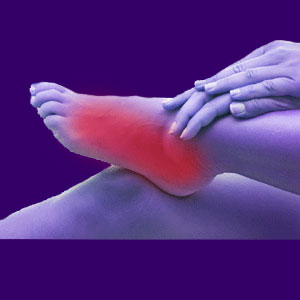
Foot cramps are a very common symptom of many back pain problems and are also a typical consequence of aging, obesity, diabetes and many other health issues. Cramps in the foot are known to occur at the least opportune times, such as when performing athletically, when trying to relax in bed or when simply going about the diverse activities of life. What causes these terrible cramps and how can they be stopped?
Recurring foot cramps are surprisingly not cited as a major reason for a person to visit a doctor. This is because self-treatment is fast, easy and almost universally effective. However, this symptom is certainly worth mentioning when you do visit your physician, since it may help them to isolate a specific cause related to the state of your general health or even discover the underlying origin of your back pain.
This dialog helps patients who suffer from foot cramps by explaining the many possible causes of these recurrent tortures, the symptoms created and the best way to treat them now and prevent them from occurring again.
Causes of Foot Cramps
Foot cramps are a common symptom, suffered by countless people of all ages and physical conditions. They can occur for many known reasons, as well as the possibility for idiopathic causation, as well. Some of the more common sources of foot cramps include all of the following circumstances and conditions:
Poor anatomical positioning can lead to transient reduction in blood circulation to the foot, leading to cramps due to cellular ischemia. This is the most common reason for cramping to exist and the least significant from a medical perspective. Elevating the feet can also cause them to cramp.
Obesity and diabetes (which are commonly found together) can both create the ideal circumstances for foot cramps to occur due to circulatory and neurological reasons.
Old age can incite foot cramps due to circulatory and neurological deficits.
Many back pain conditions can cause or contribute to cramping in the feet. Cramps are a known typical expression of many sciatica syndromes and can be influenced by symptomatic versions of many spinal pathologies, such as herniated discs, spinal stenosis, neuroforaminal stenosis, atypical spinal curvature like scoliosis or lordosis, spondylolisthesis and a variety of muscular issues, as well, such as piriformis syndrome or other sciatic nerve compression syndrome.
Regional ischemia can be part of a larger mindbody syndrome. In fact, we find that the majority of recurring cramps in the feet are indeed mindbody disorders and act in a primary gain capacity to help keep repressed emotional issues hidden from the conscious mind.
Feet Cramp Symptoms
Cramping consists of a painful tightening in the muscular tissues of the foot. The toes will often separate and stick out at odd angles in the presence of acute pain. Some patients report feeling as if the tissues of the foot are ripping themselves apart by pulling in different directions simultaneously. It is not uncommon for patients to suffer tingling prior to the onset of a foot spasm and tingling, numbness or weakness following resolution of the acute phase of pain.
Some people also suffer cramps in other parts of the leg prior to, following or during foot cramps, as well. The calf, upper frontal thigh or outer dorsal thigh are the most common locations for these spasms to occur.
First Aid for Foot Cramps
The easiest and most universal fix for an acute foot cramp is to get up and put weight on the affected foot. Make sure to steady yourself so that you do not lose your balance and fall. Placing weight on the foot will immediately encourage circulation and proper nerve function that should resolve the cramping in a matter of moments. When cramping does not resolve using this tried and true method, there might be a more nefarious cause present which may require active medical treatment or at least diagnostic evaluation.
Some people can enjoy relief simply by moving their foot around, but in many cases, mobilizing the foot without weight bearing will only increase the severity of the cramping and escalate symptoms.
Preventing Foot Cramps
Prevention of foot cramps is possible to some degree by following the guidance provided below:
Maintain good health, stay height-weight proportionate and eat right. The effects of these practices will build overall wellness and decrease the chances of suffering from all of the most serous health issues.
Stretch your body regularly throughout the day and especially before athletic exertion, before lying down to rest or prior to sitting for an extended period of time.
Wear comfortable shoes that fit right and do not pull your socks or stockings on too tight as to restrict blood flow or nerve signal in the toes.
Always remember to account for mindbody health. Many foot cramps act as distractive mechanisms to help suppress or repress sensitive emotions. This is the primary reason why so many people suffer foot spasms as they are just falling asleep. This is the time when the subconscious mind is most active and the best opportunity for repressed psychoemotional baggage to escape into conscious recognition. A quick foot cramp will certainly prevent that occurrence, since it will immediately wake the person and focus their mind 100% on the pain of the body, rather than the hidden pain of the mind. These same types of sudden cramps are also often seen as a direct result of the stress of athletic competition, as well.





